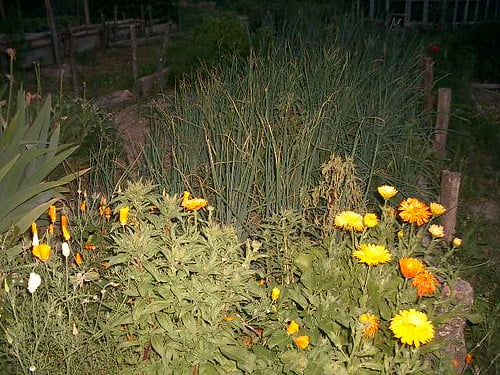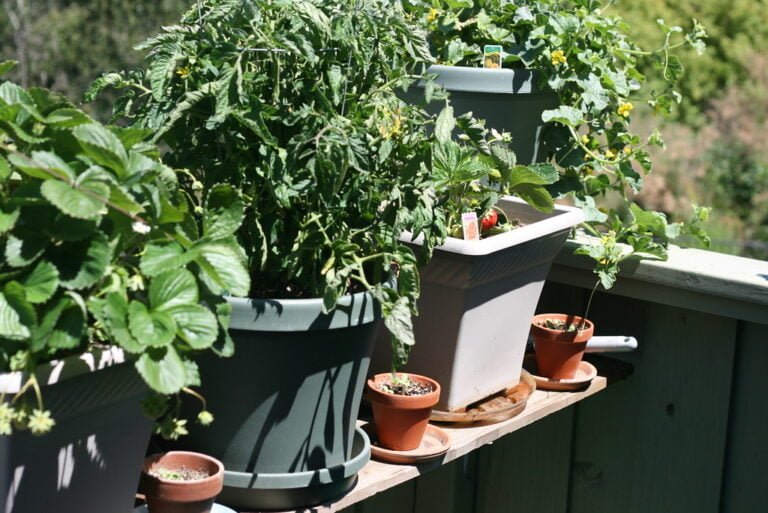Understanding the Role of Companion Planting in Soil Health Improvement: A Focus on Nitrogen-Fixing and Soil Structure Enhancing Plants
Are you looking to improve the health of your soil and maximize your crop yields? Understanding the role of companion planting can help you achieve these goals. By utilizing nitrogen-fixing and soil structure enhancing plants, you can enhance soil fertility, water retention, and create a balanced ecosystem in your garden. In this article, we will explore the benefits of companion planting and provide practical tips for successful implementation. Get ready to transform your garden into a thriving and productive space!
The Benefits of Companion Planting
By planting compatible species together, you can maximize the benefits of companion planting in improving soil health through increased nitrogen fixation and enhanced soil structure. Companion planting has numerous advantages for your garden. One of the main benefits is that it helps to attract beneficial insects, such as pollinators and pest predators, which can help with pest control. Additionally, certain companion plants can act as natural repellents, deterring pests from your crops. Another advantage is that companion planting can help improve the overall health and productivity of your garden by providing a diverse range of nutrients to the soil. For example, nitrogen-fixing plants, like legumes, can help increase nitrogen levels in the soil, benefiting other plants. By selecting the right combinations of plants and implementing practical tips, such as intercropping and succession planting, you can maximize the benefits of companion planting and create a thriving garden.
Understanding Nitrogen-Fixing Plants
To continue improving soil health through companion planting, you can better understand nitrogen-fixing plants and their role in enhancing nitrogen levels in the soil. Nitrogen-fixing plants have the ability to convert atmospheric nitrogen into a usable form for plants. This process is made possible through a symbiotic relationship with legumes, where bacteria in the plant's root nodules convert nitrogen gas into ammonia. Here are the benefits of nitrogen-fixing plants:
- Increased nitrogen availability: Nitrogen-fixing plants help increase nitrogen levels in the soil, which is essential for plant growth and development.
- Reduced need for synthetic fertilizers: By incorporating nitrogen-fixing plants into your garden, you can reduce the reliance on synthetic fertilizers, which can be expensive and harmful to the environment.
- Improved soil fertility: Nitrogen-fixing plants enrich the soil with organic matter, improving its overall fertility and nutrient content.
- Enhanced biodiversity: Nitrogen-fixing plants attract beneficial insects and pollinators, promoting a diverse ecosystem in your garden.
Understanding the benefits of nitrogen-fixing plants can help you make informed decisions when planning your companion planting strategy, ultimately leading to healthier and more productive soil.
How Nitrogen-Fixing Plants Improve Soil Fertility
When nitrogen-fixing plants are incorporated into your garden, they actively contribute to improving soil fertility through their ability to convert atmospheric nitrogen into a usable form for plants. This process is carried out by symbiotic bacteria that live in the root nodules of these plants. These bacteria, known as rhizobia, have a unique ability to convert nitrogen gas (N2) from the air into ammonia (NH3), which is then converted into nitrate (NO3-) by other soil microorganisms. Nitrate is a form of nitrogen that plants can readily absorb and use for their growth and development. By fixing nitrogen, these plants provide a natural source of fertilizer, reducing the need for synthetic nitrogen fertilizers and improving crop productivity. Additionally, the presence of nitrogen-fixing plants promotes the growth of beneficial soil microorganisms that further enhance soil fertility by breaking down organic matter and releasing nutrients for plants to use. Incorporating nitrogen-fixing plants into your garden not only improves soil fertility but also helps create a healthier and more sustainable growing environment.
Exploring Soil Structure Enhancing Plants
Incorporating soil structure enhancing plants into your garden can further contribute to improving soil health and overall plant growth. These plants play a crucial role in enhancing the structure of the soil, which is essential for root development and improving soil aeration. Here are four soil structure enhancing plants that you can consider adding to your garden:
- Lupines: Lupines have deep taproots that help break up compacted soil, allowing for better water infiltration and nutrient absorption. They also add organic matter to the soil as they decompose.
- Buckwheat: Buckwheat has a fibrous root system that helps to loosen soil and improve its structure. It also attracts beneficial insects and adds organic matter when it is turned into the soil.
- Daikon Radishes: Daikon radishes have long taproots that penetrate deep into the soil, helping to break up compacted layers and improve water infiltration. They also add organic matter when the plant decomposes.
- Comfrey: Comfrey has deep roots that mine nutrients from deep within the soil and bring them up to the surface. This nutrient-rich plant can be used as a mulch or compost to enhance soil fertility.
Enhancing Water Retention With Soil Structure Enhancers
By incorporating soil structure enhancing plants, you can enhance water retention in your garden. These plants play a crucial role in improving soil aeration, which directly affects water retention. Soil structure enhancers, such as deep-rooted plants like comfrey and yarrow, help create channels in the soil, allowing water to penetrate deeper and be retained for longer periods. The deep roots of these plants also help break up compacted soil, enhancing its ability to hold water. Additionally, these plants promote beneficial soil microorganisms, such as earthworms and mycorrhizal fungi, which further improve water retention. Earthworms create burrows that allow water to infiltrate the soil, while mycorrhizal fungi form symbiotic relationships with plant roots, improving their ability to take up and retain water. By incorporating soil structure enhancers into your garden, you can significantly enhance water retention, ensuring your plants have access to the moisture they need for healthy growth.
The Role of Companion Planting in Nutrient Retention
To enhance nutrient retention in your garden, companion planting plays a crucial role in promoting symbiotic relationships between plants. By strategically selecting and planting companion plants, you can improve nutrient cycling and maximize the availability of essential nutrients for your plants. Here are four ways companion planting contributes to nutrient retention:
- Nitrogen fixation: Certain plants, such as legumes, have the ability to fix atmospheric nitrogen into a form that is usable by other plants. By intercropping nitrogen-fixing plants with nitrogen-demanding plants, you can enhance nutrient availability and reduce the need for synthetic fertilizers.
- Root interactions: Different plants have varying root structures and depths. By planting deep-rooted plants alongside shallow-rooted ones, you can create a diverse root system that explores different soil layers, increasing nutrient uptake and retention.
- Nutrient sharing: Some companion plants have a mutually beneficial relationship where they share nutrients through their root systems. This symbiotic exchange allows plants to access a wider range of nutrients, enhancing overall nutrient retention.
- Pest management: Companion plants can help deter pests that deplete essential nutrients from your garden. By interplanting pest-repellent plants, you can protect your crops from nutrient-stealing insects, promoting better nutrient retention.
Creating a Balanced Ecosystem With Companion Planting
To achieve a balanced ecosystem in your garden, continue fostering symbiotic relationships between plants through companion planting. Companion planting not only helps with nutrient retention and soil health improvement, but it also plays a crucial role in creating biodiversity and attracting beneficial insects.
By planting a variety of different plants together, you can create a diverse and balanced ecosystem in your garden. This diversity attracts a wide range of beneficial insects such as ladybugs, lacewings, and bees. These insects help to pollinate plants, control pests, and improve overall plant health.
To attract beneficial insects, consider planting flowers such as marigolds, sunflowers, and lavender. These flowers not only provide nectar and pollen for insects but also act as a natural repellent for pests.
Maximizing Crop Yields Through Soil Health Improvement
To maximize your crop yields, it is important to consistently improve soil health through companion planting techniques. By implementing sustainable agriculture practices, you can enhance the overall health and fertility of your soil, leading to increased crop productivity. Here are four key strategies to consider:
- Crop rotation: Rotate your crops each season to prevent the build-up of pests and diseases. This helps maintain a healthy balance in the soil and reduces the need for chemical interventions.
- Cover cropping: Plant cover crops during fallow periods to protect the soil from erosion, fix nitrogen, and add organic matter. This improves soil structure and nutrient availability for your main crops.
- Intercropping: Interplanting different crops in the same area can maximize the use of space, sunlight, and nutrients. It promotes biodiversity, enhances soil health, and reduces weed growth.
- Mulching: Apply organic mulch such as straw or leaves around your plants to retain moisture, suppress weeds, and regulate soil temperature. This conserves water, prevents nutrient loss, and improves soil structure.
Selecting the Right Companion Plants for Your Garden
Now let's delve into selecting the ideal companion plants for your garden, further building upon the strategies discussed previously for maximizing soil health and crop yields. Companion plant selection is an important aspect of garden planning, as it can help improve soil fertility, deter pests, and enhance overall plant growth. When choosing companion plants, consider their compatibility with the main crop, their ability to attract beneficial insects, and their nutrient requirements. For example, planting nitrogen-fixing plants like legumes alongside heavy feeders such as tomatoes can provide a natural source of nitrogen, reducing the need for synthetic fertilizers. Additionally, incorporating plants with deep root systems can help improve soil structure and prevent erosion. Researching the specific needs and benefits of different companion plants will ensure a harmonious and productive garden.
Practical Tips for Successful Companion Planting
Select companion plants that complement your main crop and promote soil health by following these practical tips:
- Plan your companion planting layout: Before planting, carefully plan the arrangement of your companion plants. Consider factors such as sunlight requirements, plant height, and growth habit to ensure optimal use of space and resources.
- Choose compatible plants: Select companion plants that have mutually beneficial relationships with your main crop. Look for plants that attract beneficial insects, repel pests, or provide shade and support.
- Rotate your crops: To prevent nutrient depletion and minimize disease incidence, rotate your companion plants each season. This practice helps maintain soil health and maximizes crop yields.
- Consider companion plant timing: Coordinate planting and harvesting schedules to ensure that companion plants are in sync with your main crop's growth stages. This synchronization enhances nutrient availability and promotes overall plant health.
Frequently Asked Questions
What Are Some Common Challenges or Drawbacks of Companion Planting?
Some challenges or drawbacks of companion planting include competition for resources, potential for plant diseases to spread, and the need for careful planning to ensure compatibility between plants.
Can Companion Planting Be Used as a Standalone Method for Improving Soil Health, or Does It Require Other Soil Management Practices?
Companion planting can improve soil health, but it's not a standalone method. It works best when combined with other soil management practices in organic farming and sustainable agriculture.
Are There Any Specific Companion Plants That Are Known to Attract Beneficial Insects or Repel Pests?
To attract beneficial insects and repel pests, consider companion planting with plants like marigolds, lavender, and dill. These plants release scents that attract helpful bugs and repel harmful ones, creating a natural balance in your garden.
How Long Does It Typically Take to See Noticeable Improvements in Soil Health When Using Companion Planting Techniques?
To measure the effectiveness of companion planting techniques, you should look for indicators like improved soil structure, increased nitrogen levels, and reduced pest populations. Evaluating the long term impact of companion planting on soil health is crucial to determine if it is sustainable.
Can Companion Planting Be Used in All Types of Gardens, or Are There Certain Conditions or Environments Where It May Not Be Effective?
Companion planting can be used in all types of gardens, but there are certain conditions where it may not be as effective. Factors like climate, soil type, and plant compatibility play a role in determining its success.
Conclusion
In conclusion, companion planting can play a significant role in improving soil health. Nitrogen-fixing plants contribute to soil fertility by adding essential nutrients, while soil structure enhancing plants promote better water retention. By creating a balanced ecosystem through companion planting, gardeners can maximize crop yields and create a more sustainable and productive garden. It is important to select the right companion plants for your garden and follow practical tips for successful companion planting to achieve the best results.






